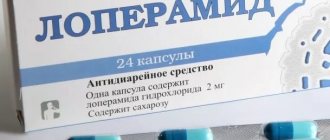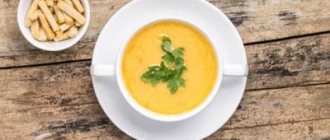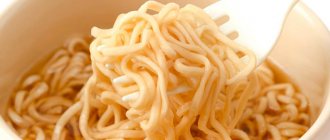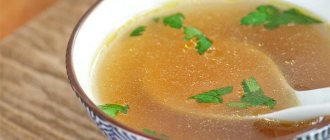Salmonellosis in adults is an infectious disease that is accompanied by symptoms of general intoxication. The peculiarity of salmonellosis is that the outbreak is sudden and widespread. One food product contaminated with salmonella can poison up to 70 people . Salmonellosis in adults is treated in a hospital, which means the person is out of the usual rhythm of life for 21 days. It is important to recognize salmonellosis in time and, if possible, identify the source of infection.
What are the symptoms of salmonellosis?
Salmonellosis is so unpleasant that it is impossible to miss, difficult to forget, and you never want to get sick from it. Some lucky people become asymptomatic carriers, but most experience the following symptoms:
- heat
- weakness
- headache
- nausea
- vomit
- severe abdominal pain
- diarrhea
The incubation period can last from 6 hours to three days, but for most people who become ill, symptoms appear within about 24 hours.
Ways of spread of infection
The source of salmonellosis infection is a small-sized rod bacterium (a few microns). The route of transmission is similar to helminthiasis - the fecal-oral method. We need to find an intermediate environment. Doctors talk about possible routes of infection:
- Food. Salmonella loves to nest in milk and eggs. Animals also suffer - you can become infected from a sick animal (bird) through trophic routes.
- Water outbreaks (on public beaches) are rarely reported.
- Specific public, closed institutions (hospitals) become sources of nosocomial infection. A special feature of the route is a relatively long incubation period, which increases the risk of spreading the infection.
The list of public and closed institutions is extremely long. The source of infection for a person can be another person or an animal. 100 thousand units of bacteria should enter the oral cavity of an adult.
Infection with salmonellosis is more often possible in the autumn-summer period. There is no strict division by season. Do not guess about the contagiousness of the product - take note of the list of dangerous elements of the diet:
- Eggs. Rumors vary regarding the safety of quail eggs.
- Chicken meat Few people eat meat and semi-finished products raw - they should be thoroughly cooked. It is easier for salmonella to take root and survive in meat.
- Fish, seafood.
- Less commonly, the cause is unwashed fruits and vegetables.
Pork and beef are rarely contagious. Sometimes transmission occurs through confectionery products containing egg cream. In hospitals, the microbe is transmitted through clothing, tools, and household items. A distinctive feature of hospital strains is their high resistance to antibiotics.
If contact-household, water and alimentary routes of spread of infection are not disputed, then airborne dust is ambiguous. They emphasize information about infection of the baby through the lungs. Infants receive the infection from the mother through the placenta during childbirth.
Is this treatable?
Salmonellosis is highly treatable; the doctor may not even prescribe antibiotics.
But under no circumstances should you try to heroically crawl to work or endure the disease on your feet, even if it is mild.
- Salmonellosis is contagious to others.
- The disease can cause serious complications.
- After symptoms disappear, a person may remain a carrier or a chronic patient.
If you suspect you have become infected
- stay home
- limit contact with family
- ask your loved ones to disinfect the bathrooms after each visit
- drink more water
Let the water have electrolytes and glucose - just add a little salt and sugar. This way you will replenish your water-salt balance and get additional energy.
What to do if signs appear
Self-medication of salmonellosis is dangerous. If you suspect an intestinal infection, you should consult a doctor. Therapy for salmonellosis is carried out in the infectious diseases departments of the hospital.
- enterosorbents (sorbex or activated carbon);
- Stay hydrated (drink at least a glass of water after each visit to the toilet).
In the hospital, intravenous administration of glucose and various saline solutions is carried out. The composition of the infusion is selected individually and depends on the content of electrolytes in the blood of a patient with salmonellosis. Professional treatment will help you quickly cope with the manifestations of the disease.
Is it possible to do without an infectious diseases hospital?
You can stay at home, but hospitalization will be required if the illness becomes severe. It’s time to go to the infectious disease clinic in the following cases:
- If you can't hold water
- If your diarrhea becomes particularly painful, slimy, or bloody
As with many other diseases, delay can make the situation much worse.
At the hospital, you will be given a drip to replenish fluid loss - dehydration can be more dangerous than the disease itself. It can even lead to a heart attack because the blood becomes too thick.
Salmonella in fish
The fish body is not a natural breeding ground for salmonella. However, eating uncooked fish can be dangerous. Salmonella in fish appears due to cross-contamination when these two basic rules of safe food preparation are violated:
- keep dishes and work surfaces clean, wash your hands before preparing food;
- Separate raw meat products from ready-to-eat products.
Therefore, if you doubt the integrity of the chefs of a Japanese restaurant, it is better to refuse tuna sushi.
How is salmonellosis transmitted?
Salmonella bacteria live in the intestinal tract of people and animals and are spread through excrement. Animals usually do not get sick with salmonellosis, although they can carry it, but a person can be both a carrier and a sick person.
Salmonella settle in the intestines and produce a toxin that leads to dehydration, impaired vascular tone and even damage to the nervous system.
Non-typhoid Salmonella leads to typical infections such as gastroenteritis; different types of typhoid Salmonella can cause typhoid fever, respectively. It is now quite rare outside of third world countries.
There are two main ways salmonella spreads: through contaminated food and through contact with animal carriers.
Food contamination
Salmonella is present in the excrement of many animals, including cows, birds and fish. If food processing standards are not followed, bacteria can affect meat, milk or eggs. Moreover, they can live both inside and outside the shell, so just washing the eggs is not enough.
Salmonella's best friends are dirt, poor hygiene and poor animal living conditions.
Even a conditionally sick animal may never infect anyone if the milk, eggs and meat are processed according to all the rules, and the chickens are not allowed to live knee-deep in the litter.
Salmonella can persist in food for quite a long time and is killed by heat treatment (but not by freezing!).
Acceptable temperature conditions:
- 1.5 hours at temperatures up to 55 degrees
- 12 minutes at temperatures up to 60 degrees
- 10 minutes at 75 degrees
And please do not wash meat and chicken in the sink (or anywhere). You'll just end up splashing salmonella all over your kitchen.
If there are bone fragments on the meat, scrape them off with a knife and let the heat handle the rest.
Don't forget to wash your hands after handling raw foods!
Contact with animals...
Salmonella is carried by both wild and domesticated animals. If you have a house in a village or a dacha, be careful with village milk and delicious eggs from neighboring hens. The same applies to “environmentally friendly farm products.”
Animals may look healthy and well-groomed, but this will not prevent them from being carriers of salmonella.
Safety regulations:
- eggs need to be collected every day
- wash them immediately and put them in the refrigerator
- wash your hands after handling eggs
- wash your hands after visiting the chicken coop or feeding the chickens
- wash your hands after touching a chicken's feathers
- immediately isolate dead, sad or visibly sick chickens (this should be done in any case, given the chicken tendency to peck at sick companions).
...including exotic
You will be surprised, but it turns out that exotic animals also carry salmonella. Not only parrots, but also iguanas, lizards, turtles and snakes. In general, all are distant, distant relatives of dinosaurs (and, therefore, chickens).
Carriers can be hamsters, guinea pigs, toads, frogs, hedgehogs - almost anyone.
Accordingly, hand washing, which we have become so accustomed to over the past pandemic months, should remain with us forever. After interacting with the animal, wash your hands, and before that, do not put them in your mouth, nose or eyes.
How to wash your hands correctly? WHO instructions
Apply liquid soap to your palm so that it covers your entire palm. Rub your palms together until the foam completely covers your hands and wrists.
• Apply liquid soap to your palm so that it covers the entire palm. Rub your palms together until the foam completely covers your hands and wrists.
• Rub the back of each hand and between your fingers.
• Clasp your hands and pass the fingers of one hand between the fingers of the other. Then repeat for the other hand.
• Wash your thumbs. To do this, grab your left thumb with your right hand and rub it in a rotational motion. Switch hands.
• Rub the fingertips of one hand against the palm of the other hand.
• Rinse off the soap.
• Dry your hands with a clean towel. After this, do not touch the tap or the door handle with your bare hand - use a disposable towel for protection.
Why is it so important to wash your hands?
Thousands of people around the world die from infections. Hands are the main “transport” of bacteria. Hand hygiene is a reliable way to protect a person from serious diseases caused by viruses. We'll show you how to properly wash your hands to protect yourself.
full certificate
Is it transmitted from person to person?
The unpleasant truth: Salmonella is transmitted by people just as successfully as it is transmitted by animals through feces. Going to the toilet and not washing your hands is a common occurrence for some people. And given the nature of the symptoms, tiny fecal particles may end up on more than just your palms.
People with diarrhea should not return to kindergarten, school or work for at least 24 hours.
If a person works with products, then at least two days must pass after the symptoms disappear.
Salmonella in chicken
Despite the fact that these bacteria live in the intestines of almost all domestic animals, salmonella is most often found in chicken. The fact is that in birds the bacillus practically does not cause the development of the disease, and therefore chickens living in cramped conditions can become “infected” with salmonella with absolutely no harm to each other. Meat that goes on sale is never sterile. Try to minimize the amount of time the meat spends in the bag between the store freezer and the home refrigerator.
However, don't rush to wash a chicken breast or wing under running water to eliminate bacilli, as is often done. You will not destroy bacteria in this way, but some of them will be washed off with water and may remain on the walls of the sink and on kitchen utensils. High-quality frying of chicken meat is quite a sufficient preventive measure to destroy salmonella in it. Keep leftover cooked food refrigerated and reheat well before serving.
Who is most at risk from salmonellosis?
Salmonellosis is caused by a fairly large number of bacteria - just one will not be able to overcome our immunity. However, even a small colony is enough to infect infants, children under 5 years of age, those over 65, and people with compromised immune systems.
People who take antacids are at greater risk of infection so that more of the bacteria they swallow will survive and reach the intestines.
People with inflammatory bowel disease (due to damage to the mucous membrane) and those who have recently taken a course of antibiotics are also more vulnerable to salmonellosis. The death of beneficial intestinal flora depletes the microbiome and leaves room for salmonella.
Important point
In addition to ordinary salmonella, there are also much more dangerous “little animals” - the causative agents of typhoid fever and numerous paratyphoid fevers. You can no longer relax with them - these diseases often lead to death. However, thanks to widespread vaccination, the risk of encountering Salmonella typhi remains only somewhere in Africa.
We also think you might benefit from learning about how to deal with food poisoning. Still, this knowledge is extremely useful, as it allows you to get back in shape much faster.
Path inside the body
Regardless of the chances of salmonellosis being transmitted from a person or animal, through food or drink, the bacteria enter the stomach. The pH factor is low, the rod does not reproduce, but does not die. Salmonella has a relatively high resistance to gastric juice. If it is not possible to destroy the pathogen, its number exceeds one hundred thousand, infection occurs.
When they die, the rods release endotoxin into the environment, which weakens the immune system. Depending on the quantitative ratio of living and dead units, the process of infection development is considered local or generalized. Locally, toxins predominate - poisoning passes quickly. With the generalized course of the disease, complications are possible - a trip to the doctor should not be postponed.
The introduction of the infectious agent into the body occurs primarily in the small intestine.
Adhesion to epithelium
Salmonella moves randomly with flagella and lands on the epithelium. The microbe is resistant to the bactericidal action of the mucous membrane. It is introduced into enterocytes due to the fimbrial apparatus.
Infection of the lymphatic system
The ability to invade is determined by pathogenicity islands (SPI) 1, 2 and 4. Through folded cells, the microbe penetrates into the lymphatic system, affecting the nearest nodes (thoracic, mesenteric), from here blood vessels become infected with Salmonella. Affected M cells die over time.
Infection of phagocytes
The rod is capable of infecting different types of cells. The SPI-1 island is responsible for infection. The peculiarity of Salmonella is the ability to survive inside phagocytes and reproduce there. SPI islands 2 and 4 are responsible for the processes. The phagocyte dies over time due to activation by the causative agent of apoptosis. This is a factor in the spread of infection throughout the body - generalization.
Bacteremia
After the death of the phagocyte, Salmonella can be released into the blood. Dies under the influence of specific serum factors. Otherwise, the act of transmitting salmonella to organs and tissues occurs, where it is not easy to destroy. Existing methods boil down to taking antibiotics.
Intoxication
When the bacillus dies, the patient receives a dose of endotoxin (a poison secreted by Salmonella). Toxins cause symptoms: vomiting, nausea, colic. The process is accompanied by malfunctions of the immune system. Salmonella causes the body to generate non-fighting antibodies. Man cannot win.
Inhibition of the secretion of chloride ions by the epithelium leads to the development of diarrhea. The process is made possible by the activity of the SPI-5 island. At the same time, an inflammatory reaction develops. An additional role is played by enterotoxin, which increases the level of cAMP, a separate factor in the accumulation of fluid in the lumen.
The use of folk decoctions and tinctures for illness
In folk medicine, there are recipes that can reduce the unpleasant symptoms of salmonellosis and strengthen the body:
- Chamomile infusion, taken 2 tablespoons after meals, helps relieve intestinal spasms . A tablespoon of dried material is poured into a glass of boiling water and left for at least four hours.
- The infusion of plantain (a tablespoon of raw material per glass of boiling water) is infused for about 10 minutes and given to the patient to drink in small sips for an hour.
- Calendula infusion, which has an anti-inflammatory effect, is prepared from one teaspoon of flowers, pouring a glass of boiling water over them. Take half a glass between meals.
For salmonellosis, it is recommended to use a decoction of oak bark, which has an astringent and anti-inflammatory effect.
Note. Infusions and decoctions of traditional medicine should be taken in conjunction with a therapeutic diet and only after consultation with a doctor.
The diet after salmonellosis in adults should never be stopped. Despite ridding the body of harmful bacteria, the intestines need complete restoration . It can be ensured by gentle nutrition, consumption of fermented milk products with beneficial microorganisms: the “Acidophilus” drink, the bacterial preparations “Narine” and “Lactobacterin”.











